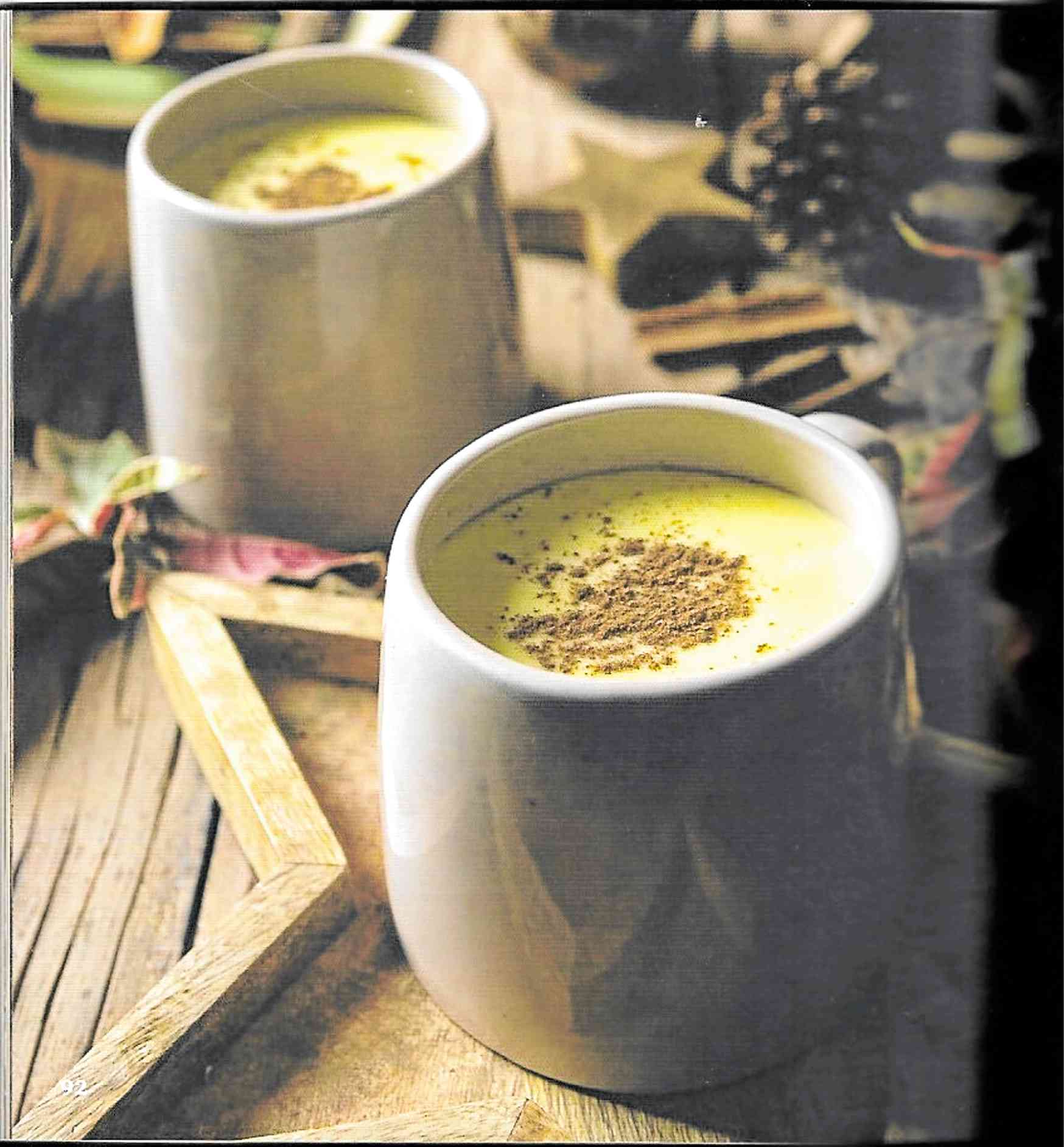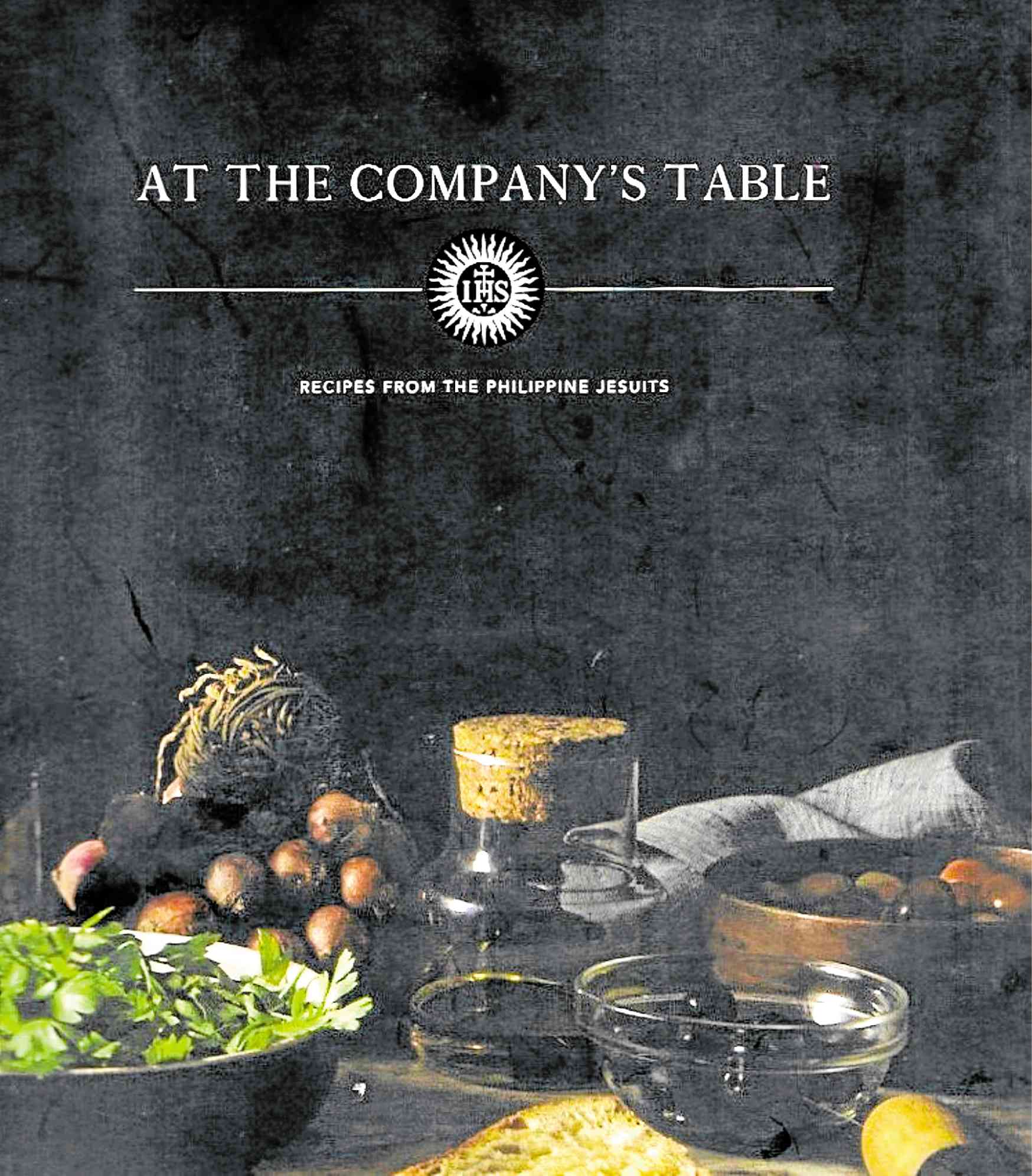What is Christmas food?
In my opinion, it is simply food and flavors that mean something, the kind that evoke a wistful yearning. Most of what I enjoy eating at this time of year remain unchanged.
Which was why I was so pleased to receive a copy of the cookbook “At the Company’s Table,” a compilation of Jesuit recipes, from Fr. Ari Dy, S.J.
When I first opened the book, I landed on eggnog.
Eggnog for me speaks Christmas—not only is it a holiday drink, but it was also one of my dad’s favorites.
Grapes are another. I have always associated them with feasts and celebrations, which was why I was so amused when I saw Fr. Herb Schneider’s Grape and Sausage recipe. I could almost savor it in my mouth. A little spicy, a tad salty and sweet. This is how I like my food. The dish looks festive, too!
Here are both recipes, with snippets of information and some inside stories, too.

The JR (Jesuit Residence) Eggnog by Fr. Rene Javellana
The Christmas eggnog was a tradition at the Jesuit Residence, when the fathers would receive gifts from convents and schools. The Assumption sisters would send Assumption tarts, the Good Shepherd sisters sent baked bread, and more recently, the Canossian sisters, panettone and uncooked pasta from Italy. The RVM used to send uncooked balut, when their Mother General was from Pateros. But the one gift that was awaited and served at 10 a.m. on Christmas Day was eggnog from the Holy Spirit sisters.
6 large egg yolks
½ c granulated sugar
1 c heavy whipping cream
2 c milk
1/2 tsp ground nutmeg
Pinch of salt
¼ tsp vanilla extract
¼ c rum
Ground cinnamon for topping
Whisk the egg yolks and sugar together in a medium bowl until light and creamy.
In a saucepan over medium-high heat, combine the cream, milk, nutmeg and salt. Stir often until mixture reaches a bare simmer.
Add a big spoonful of the hot milk to egg mixture, whisking vigorously. Repeat, adding a big spoonful at a time, to temper the eggs.
Once most of the hot milk has been added to the eggs, pour the mixture back into the saucepan in the stove.
Whisk constantly for just a few minutes, until the mixture is just slightly thickened (or until it reaches about 160°F on a thermometer ).
Remove from heat and stir in the vanilla.
Pour the eggnog into a pitcher or other container.
Let the eggnog cool, then add the rum. Cover with plastic wrap.
Refrigerate until chilled. It will thicken as it cools. If you want a thinner, completely smooth consistency, you can add the entire mixture to a blender with 1 or 2 tablespoons of milk and blend until smooth.
Serve with a sprinkle of cinnamon, and fresh whipped cream, if desired.
Store homemade eggnog in the fridge for up to one week.
Grapes and Sausage by Fr. Herb Schneider
I have had the privilege of cooking turducken (turkey stuffed with a duck and a chicken) with Father Herb in my kitchen. He is such a good cook. His Grapes and Sausage is so holiday-appropriate and easy to do.

½ kg Italian hot sausages
½ kg Italian sweet sausages
3 Tbsp unsalted butter
5-6 c (2 lbs) red or green seedless grapes, stems removed. You can also get half red and half white grapes. Cut them in half.
2-4 Tbsp dry red wine, preferably Chianti
1/2 tsp hot red pepper flakes
3 Tbsp balsamic vinegar
Fresh foccacia or ciabatta bread, to serve
Preheat the oven to 500°F.
Parboil the sausages in water to cover for 8 minutes to rid them of excess fat. Before cooking, punch some holes so that the sausages don’t break.
Melt the butter in a large heatproof roasting pan, add the grapes, and toss to coat. Over moderately high heat, add the wine. Stir with a wooden spoon for a few minutes until the wine has reduced by half.
Using tongs, transfer the sausages to the roasting pan and push them down in the grapes so the sausages will not brown too quickly. Roast in the oven, turning the sausages once, until the grapes are soft and the sausages have browned, 20 to 25 minutes.

Place the roasting pan on top of the stove over medium-high heat and add the balsamic vinegar. Scrape up any browned bits at the bottom of the roasting pan, and allow the vinegar and juices to reduce until they are thick and syrupy. With a slotted spoon, transfer the sausages and grapes to a serving platter.
Pour the sauce over the sausages and grapes and serve immediately, accompanied by fresh bread.
Father Herb’s notes: You may not be able to get sweet and hot Italian sausages. Here is a substitute that works pretty well: nurembergerli (Nuremberg bratwurst). These sausages are about the size of your index finger.
To get a little heat, I add 1/2 tsp pepperoncini flakes, and possibly a teaspoon of fennel seeds with the red wine to imitate the taste of Italian sausages. You can also use longganisa in place of the sweet sausages for a Filipino flavor.
‘Saying Grace’
There are many other recipes of interest, but the page on “Saying Grace” struck me most.
I learned that “the term grace is used by Christians to refer to the short prayers of thanksgiving offered before and after meals.”
And while we are aware of the prayer before meals, I have not encountered the prayer for after meals. The traditional prayer, is as follows:
We give Thee thanks, Almighty God, for all thy benefits, Who livest and reignest, world without end. Amen.
The cookbook is available at the Ateneo through Jesuit Communications. The proceeds from the publication will go to the Caloocan Mission of the Sacred Heart.








































